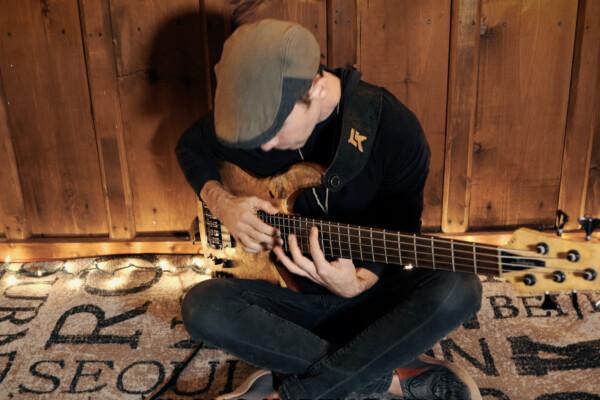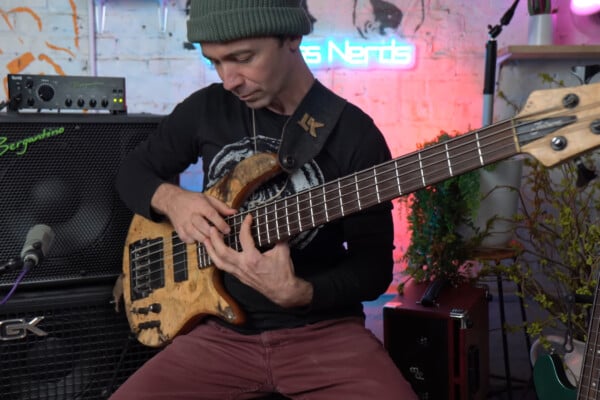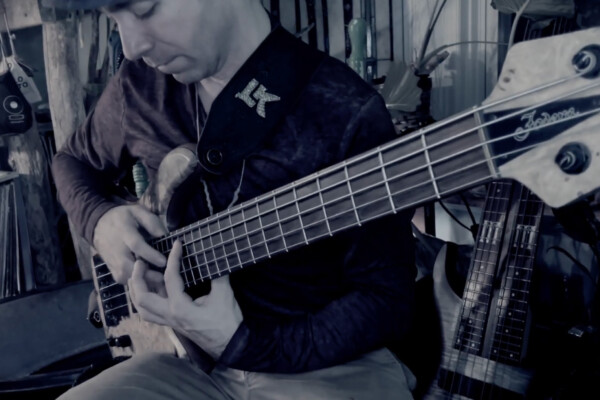Frail Things in Sharp Places: An Interview with John Ferrara
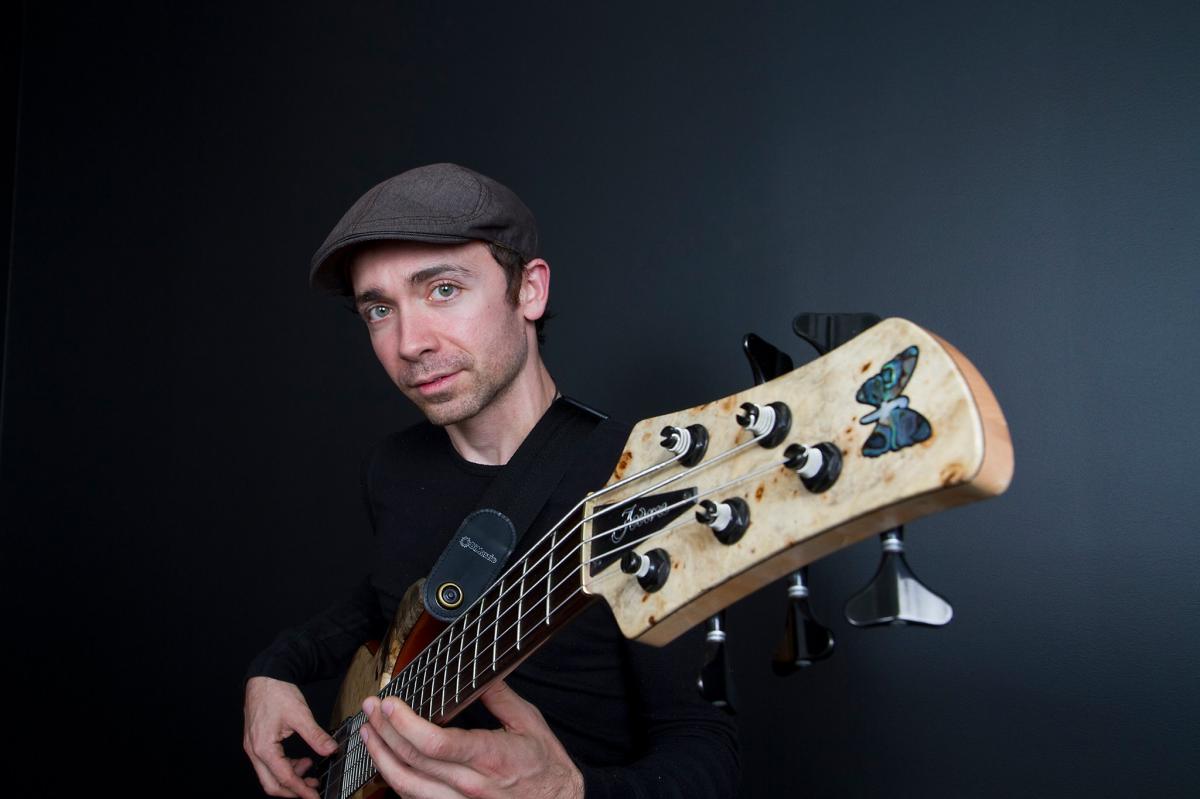
John Ferrara has released a stunning new duo album with percussionist Seth Moutal entitled Frail Things in Sharp Places. The bassist, who many know for his band Consider the Source, seems to get every last ounce of music out of his instrument over the 11-song collection. Although his extensive playing techniques are extremely impressive, it is obvious that they are merely tools for the duo’s compositions.
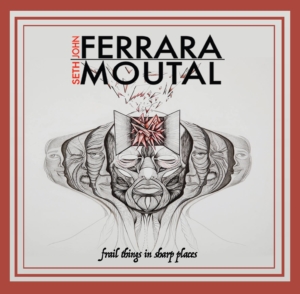 Where plenty of instrumental artists release an album only as a vehicle for their playing, Frail Things is a cohesive emotional journey. Each song tells its own story, but together they weave a beautiful tapestry that gives one a cinematic sense from the experience, like listening to the arc of a movie. Ferrara and Moutal blend their instruments together beautifully with each taking solo pieces over the course of the album. It’s a prime example of how much music you can make with just two people. Simply put, this is one of my favorite albums of the year.
Where plenty of instrumental artists release an album only as a vehicle for their playing, Frail Things is a cohesive emotional journey. Each song tells its own story, but together they weave a beautiful tapestry that gives one a cinematic sense from the experience, like listening to the arc of a movie. Ferrara and Moutal blend their instruments together beautifully with each taking solo pieces over the course of the album. It’s a prime example of how much music you can make with just two people. Simply put, this is one of my favorite albums of the year.
I reached Ferrara over Skype where we had a great chat on the duo’s origins, his writing style, how he developed his monstrous tapping technique, and more. Frail Things in Sharp Places is available now on Bandcamp. Don’t miss the duo as they head out on tour in June and July.
How did you and Seth Moutal start working together?
In Nyack, where I live, there’s an amazing community of musicians. Nyack is almost like this mecca for really cool musicians and artists that a lot of people don’t really know about. When I was thinking about doing a side project because there were a lot of tunes I had written that didn’t work with Consider the Source for various reasons, I was saying, “Ok, well I connect with drummers more than any other musicians. First and foremost, let me find a drummer to work with and maybe that might be enough.”
The idea I had was to use foot pedals and looping and all that stuff. I had heard about Seth because I knew his ex-girlfriend, plus [Consider the Source drummer Jeff Mann] knows him. It’s funny because I met him at an open mic night, which for all intents and purposes was otherwise a pretty crappy open mic night. He was playing some cover song but at the end of it he took a solo and the dude just murdered it, then I put it together with who he was. Months later when I was really thinking of putting a project together, he was the first person I thought of. Sometimes you just have one of those ineffable understandings that something is going to work. I hit him up and I was almost sure it was going to be a good fit, and it was. The first rehearsal went really well. I showed him some ideas I had and I was like, “I don’t know if these should be solo pieces or something more. Let me show them to you and see if any ideas come to you.” I played some ideas and gave him some poorly conveyed beats using my mouth and he ran with it. [laughs] It just flowed really naturally.
Since you have to do all of the melodic and harmonic content, how much did you actually work with Seth to put it together?
Although I brought in the skeletal structure with melodies and bass lines, I couldn’t do it without Seth and his creative energy. I would feel weird putting it just as me. When we were trying to put a name to the project, first we had that awful rabbit hole of terrible band names. Then Seth said, “Why don’t we just call it the John Ferrara Duo?” That wouldn’t feel right. He breathes so much life into these tunes to make them exist the way I think they should. He’s brilliant. He’s got great ideas and he added several elements to the album that I wouldn’t have thought of.
It seems like you guys really click on the world music stuff.
He’s studied tabla formally and he’s awesome at it. I believe he studied with Jamey Haddad, who is one of the best all-around hand drummers. He’s one of those once-in-a-lifetime amazing players. So Seth is embedded in different cultural types of percussion in ways deeper than I am. I feel like I dug pretty deep into Indian music – specifically South Indian music – but that’s pretty much it. All the other stuff I’m kind of faking it. [laughs]
You’ve been putting out videos of songs for the past year or so. Did this album come together piece by piece or did you have the whole idea ahead of time?
I had a loose idea, but it was nebulous. I had a pool of songs I wanted to do something with that all had something about them that told a story. I decided to just record everything I have and from there pick which songs would work together best. There are still three or four songs that are recorded that I decided to save for later. I have thoughts about doing a solo album in the next year or so, so maybe a couple will end up on that.
This album is like a snapshot of where I’ve been the past couple years emotionally. They’re going to sound somewhat alike and have a similar thread. At the same time, I wanted to tell a story with the album that was cohesive.
For example, I put out a video for a song called “Ben Franklin’s Hair”. I don’t know why I named it that, but I thought it was hysterical at the time. [laughs] I looked at that song and said, “I really enjoy playing that piece and I like how it came out.” Even though there are some happier, uplifting tunes on the album, on the whole, it’s kind of a darker, minor-key kind of album. I liked keeping it more that way. The past couple years emotionally have been crazy for me, so I just wanted to give the listener an honest representation of who I am as a person and as a player. “Ben Franklin” was just when I was in a good mood. [laughs] I’m at a point now where I’m getting out of my funk, so maybe the next one will be a little brighter.
I know you like to use movie and pop references for titles, so is that where you got the album name?
No, actually my ex-girlfriend came up with the title. She’s really amazing because she’s absolutely brilliant with words and is all around a very creative and artistic person, but she doesn’t ever do anything with it. She’s not ambitious like that, which I think is part of what’s cool and authentic about her. She had this series of words that conjured up something about vulnerability that resonated with me. Right when she said it I thought, “That’s an album name.” Before I even had the idea for this album, I thought I’m going to name something that. When we finally got the project together, it was easy.
Some of the song names are pop references. With Consider the Source, we’re huge dorks. We’re into a lot of shows, cartoons, movies, and things like that. It really is the best way to come up with a title. When you take [a quote] out of context it can mean something else, but when you hear it in the context of the show it’s hilarious.
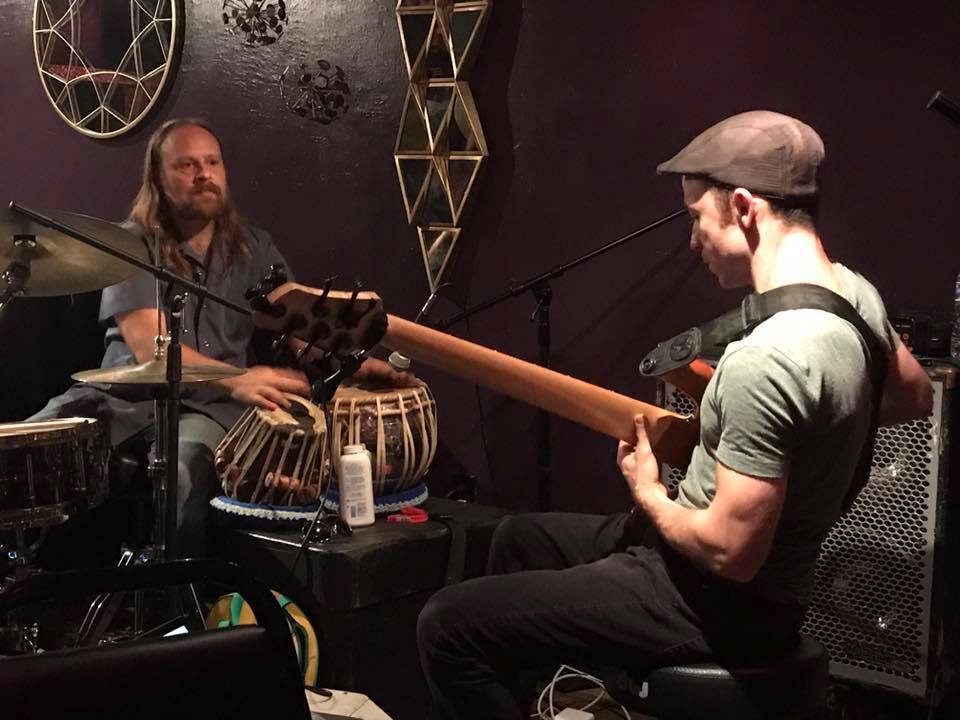
I’m guessing “When Will Then Be Now” is from Spaceballs?
It is! I was on tour with Consider the Source and the drummer from Dopapod was putting us up for the night. Out of nowhere, he used that quote and I said, “Oh yeah, there are three songs I need names for!” So that one came together in a funny way.
Did each song come as little snippets and you built them from there?
Each song came on its own terms. The interesting thing is that I feel like often the ones I’m most proud of get written really quickly. When the iron is hot and you’re in that mindset, the song will just flow. When you’re in a situation where it’s months in between writing periods, it’s not necessarily bad. Things need a gestation period, but you run the risk of things becoming disjointed. If you think about all the different emotions you can experience, they’re not all the same. There are different kinds of excitements. If you write a song like that it might be hard to capture that exact type of excitement.
Certain songs, like “Jackie Chan,” I just wrote in an afternoon. I remember being in Austin, Texas on tour and we had a couple days off. It was beautiful weather so I just sat outside in the backyard of our buddy’s house and spent hours working through it. I’ll have an idea like the rhythm and I’ll say, “That’s a cool rhythm. Let me put some notes to it.” Then I’ll start adding notes and then spend time figuring out how to do that. It took some time just to be able to put that together to see if it was anything worth pursuing. I wrote the chorus riff based on a similar tapping pattern by flipping the voices and changing the keys. I didn’t have my looper with me, so I recorded it on my phone and started playing a melody over it. When I came home from tour, I was playing with my Taurus pedals and thought, “Let me try a weird, low melody that doesn’t seem like it should work.” I was inspired by the Bad Plus’ cover of “Chariots of Fire”. It’s a really cool bass line but has absolutely nothing to do with the melody. When you hear it together it works in a really cool way. So I stumbled onto those three notes that might rub you the wrong way at first, but it works.
I wrote “Song for Ramida” in an afternoon and then spent a bunch of time learning how to execute it. Figuring out the ideas for it came extremely quick.
How often do you hear a musical idea in your head that takes you forever to be able to execute?
A lot. I really like the idea of letting your idea come out first and then just getting your hands going to figure out how to do it. The cool thing is that sometimes you do that and in an afternoon you have a song. Sometimes it forces you down a journey for six months on bettering your technique or learning a totally new one, and sometimes it’s a new one that you’re never gonna use again. With Consider the Source there’s one tapping riff in one of our songs that I worked on for months and months and months. Finally, we played the song live and it went well. I started getting requests from students on how to do it and I said, “Dude, I can teach you this one bass line with that technique and literally nothing else.” [laughs] I want to run away from this technique. It made me hole up in my room for hours a day for six months.
But if you want to convey an idea, that’s what you have to do sometimes. I think a lot of people stray away from it because it’s tough. There have been techniques that I’ve strayed away from because they don’t resonate with me. You have to make a decision sometimes: do you want to invest that much time or is there another technique that might convey the same or similar thing? Either way, you might have to invest a ton of time into it if you really want the idea to come across.
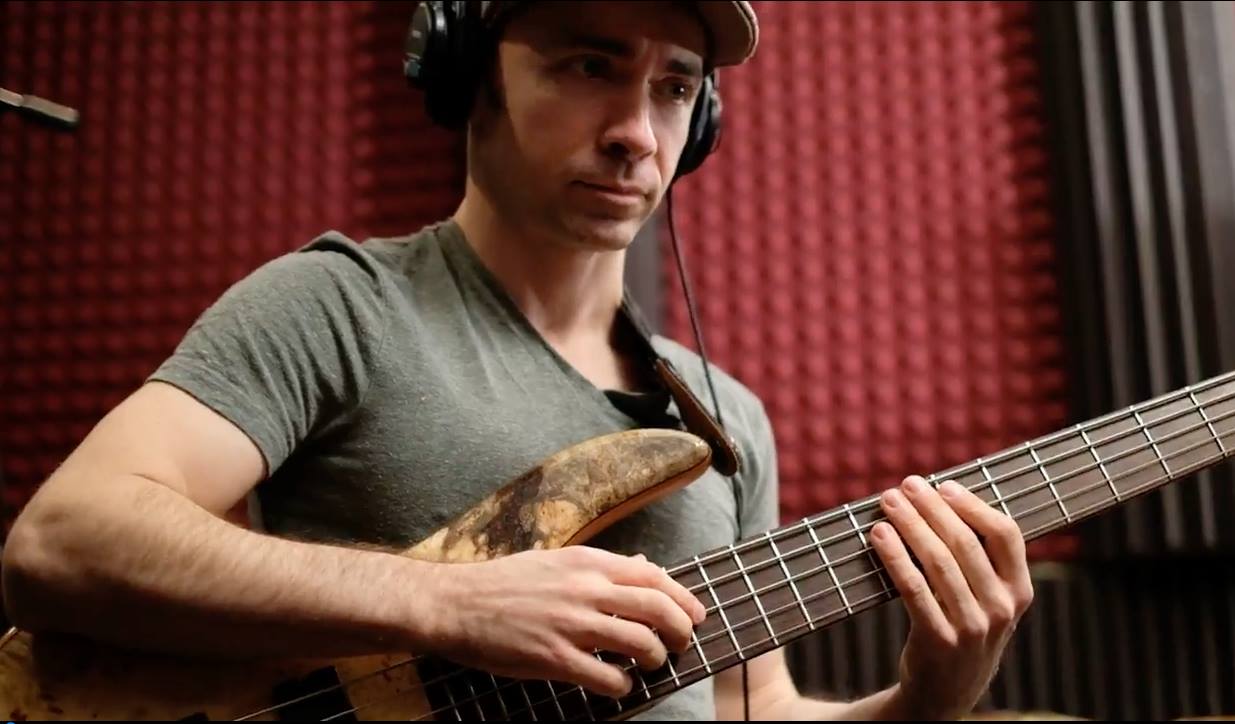
It’s obvious you’ve put tons of time into tapping. It almost seems like your way of thinking is different from a bass player when you use it. You’ve got a more harmonically or melodic approach that strikes me more like a pianist. How did you develop that?
I listen to a lot of piano-based music. I love the piano. Chick Corea, Brad Mehldau, Philip Glass and other kinds of minimalist music has been my focus. I get really obsessive over things. Over the past year and a half when people ask me what I’ve been listening to I always say Philip Glass. That’s really it. I go down these rabbit holes.
When I was playing a four-string, my ideas were just gravitating more towards melodic stuff and I started to get some facility with my tapping chops almost by accident. I used to use it just to compose by tapping a rudimentary bass line with my left hand and a rudimentary melody with my right hand. Then I’d divvy the parts up after that. After doing that for years, I realized I had some coordination so I approached it the same way I approached learning slap bass. I could do a certain amount but I plateaued, so I tried to transcribe my own mind and the ideas that kept coming to me that I kept failing at. I’d try to make exercises out of them.
Then I started to try to learn piano pieces that I like by composers like Erik Satie, Philip Glass, and Chick Corea. I started learning Radiohead stuff and Bad Plus stuff, then I realized I could do a decent amount of things. It gave me some insight, too, because I could start to see how pianists voice chords. Sometimes it works on the bass and sometimes you have to lose a few notes. There’s a ton you can do with a five-string bass with a high C string. If you get your tone right and you get certain patterns down – like inversions and chord voicings – the bass can really function in that role. Using the Taurus pedals gives me a lot of freedom to explore that more by letting me retain the bass part.
John Ferrara + Seth Moutal Duo Tour Dates:
| Date | Location | Venue |
|---|---|---|
| Jun 22 | Downsville, NY | Jet??? Festival w/ Club d’Elf and more.. |
| Jun 30 | Boston, MA | Cafe Luna |
| Jul 1 | NYC, NY | Rockwood Music Hall |
| Jul 6 | Charlotte, NC | Rock University - Master Class |
| Jul 6 | Charlotte, NC | The Rabbit Hole |
| Jul 7 | Raleigh, NC | The Pour House Music Hall |
| Jul 8 | Florence, SC | Private event |
| Jul 12 | Baltimore, MD | 8X10 |
| Jul 14 | Reading, PA | Private Event |

